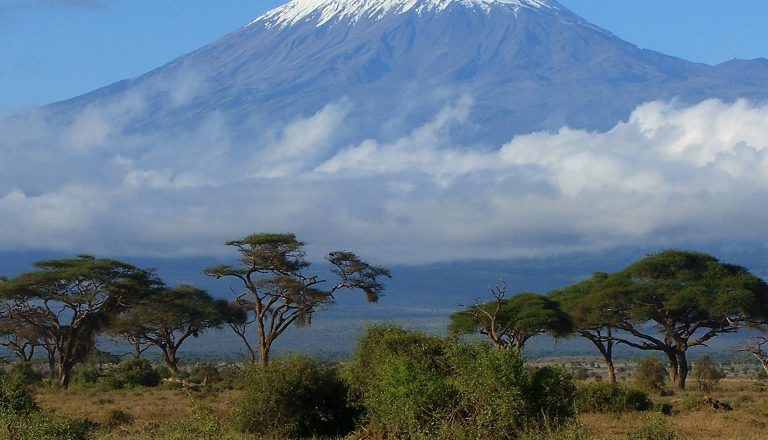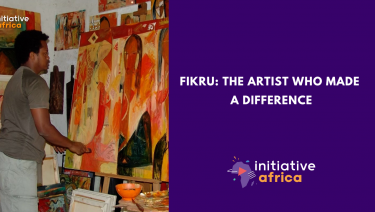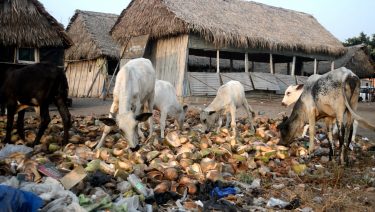Why East Africa’s glaciers are on the brink of extinction

Michael Sommers
Due to climate change, East Africa’s remaining trio of tropical glaciers – on Mount Kenya, Mount Kilimanjaro, and the Rwenzori Mountains – are expected to vanish by 2040.
As world leaders, scientists, and activists gathered in Glasgow for the recent U.N. Climate Change Conference, global media was sounding the alarm about the imminent demise of East Africa’s remaining glaciers. The scintillating stuff of legends, this trio of equatorial glaciers crowning Mount Kenya, Mount Kilimanjaro, and the Rwenzori Mountains spawned the Nile River and inspired Ernest Hemingway’s classic The Snows of Kilimanjaro. Yet now, instead of a life source, these vanishing blocks of ice have become a prophetic symbol of the destruction wrought by climate change.
The “Near Future” is Imminent
“The rapid shrinking of the last remaining glaciers in eastern Africa, which are expected to melt entirely in the near future, signals the threat of imminent and irreversible change to the Earth system,” warned World Meteorological Organization’s secretary-general, Petteri Taalas, in October this year. Scientists have been tracking the melting of these glaciers for decades, but in recent years the pace has accelerated at an alarming rate. The “near future” is now surprisingly imminent; the UN predicts the glaciers will completely disappear by the 2040s.
Global warming is the major culprit in the glaciers’ untimely disappearance. Yet, surprisingly, rising air temperatures are not to blame. Rainer Prinz is a senior scientist, specializing in glaciology, at the University of Innsbruck in Austria. Having spent years studying East Africa’s glaciers, Prinz emphasizes that, unlike those at more northerly latitudes, these tropical glaciers – which sit high above the snowline (where it’s always cold, even in East Africa) – aren’t sensitive to changing air temperatures. They are, however, uniquely susceptible to changes in the amount and frequency of precipitation. Abundant snowfall is what ensures these glaciers’ survival. Apart from adding mass to the ice blocks, snow effectively reflects sunlight (instead of absorbing it) while precipitation-bearing clouds attenuate solar radiation.
With 2040 fast approaching, Prinz confesses that no human intervention can save these glaciers from impending extinction. “The only possibility is that future precipitation levels might change, even with climate change. There’s a chance that in coming years, humid tropical regions could actually see more precipitation.” Prinz explains that Kenya, Tanzania, and Uganda straddle both dry and wet tropical regions. “Based on our models, East Africa could go either way.”
Economic and Spiritual Loss
If the glaciers vanish, the biggest impacts are likely to be the less obvious ones. Contrary to popular belief, East Africa’s glaciers aren’t a source of water for the lowlands. “That’s a myth,” says Prinz. “They’re much too small. The highest precipitation rates occur in the forested areas of the highlands, which provide the largest source of water.”
The biggest loss is likely to be felt in tourism. Over the years, the spectacular paradox of gleaming ice-tipped mountains ascending from a sweltering tropical landscape has seduced many visitors to follow in the footsteps of Hemingway. Meanwhile, for local inhabitants, the most dramatic loss could be spiritual. For many, these lofty white summits are the sacred dwelling places of traditional deities. “In losing the glaciers, people will be losing a part of their spiritual life,” says Prinz.
See also

Interview with Ikechukwu Anoke, CEO & co-founder Zuri health
With one doctor for every 10,000 people in Africa, and 65% of mobile users without internet access, ZuriHealth is tackling the continent’s biggest healthcare challenges head-on. In this interview, CEO Ikechukwu Anoke shares how this virtual hospital platform — accessible via SMS, smartphone, or basic mobile — is breaking down barriers to care, from affordability to geographical distance. Born out of a personal story, ZuriHealth now operates in 9 countries and aims to reach all 55 African nations within 3 years.

Shea Butter Skincare — Made in Burkina Faso
In Ouagadougou, Odiss Cosmétiques is transforming damaged skin and outdated beauty standards using one powerful tool: locally sourced, natural ingredients like shea butter, neem, and baobab oil. Founded by Denise Odette Konseiga, a former pharmacy assistant, Odiss has grown into a certified organic brand that now employs 17 staff and supports over 300 women across shea cooperatives. From Burkina to Belgium and beyond, the brand is making waves. In a market long dominated by imports, Odiss is proving that African-made skincare can be both ethical and effective. Journalist: Sonia Kocty

Interview with Trésor Ebamu Fakana, political analyst
In the Democratic Republic of Congo, organ transplantation remains largely unregulated and unpracticed. Political analyst and anti-human trafficking expert Trésor Ebamu Fankana calls for urgent public debate and legal reform to address the ethical, medical, and legal challenges linked to organ donation and trafficking. In this interview, he discusses his latest book Let’s Talk About It and warns about the dangers of inaction in a region where insecurity, poverty, and legal loopholes create fertile ground for exploitation. Journalist: Alexandra Vépierre

The Artist Who Made a Difference
From his first exhibition in 1995 to over 30 solo shows across Europe and North America, Ethiopian painter Fikru Gebremariam has carved out a singular path. His latest collection — exhibited at the Alliance Ethio-Française in Addis Ababa — marks a bold new chapter: an embrace of abstract expressionism rooted in African soil. In this portrait, Fikru reflects on his artistic evolution, his rejection of labels, and the subconscious forces that shape his work. Art historians, curators and fellow artists explore how his life, heritage, and travels converge on canvas. Journalist: Tefera Ghedamu





